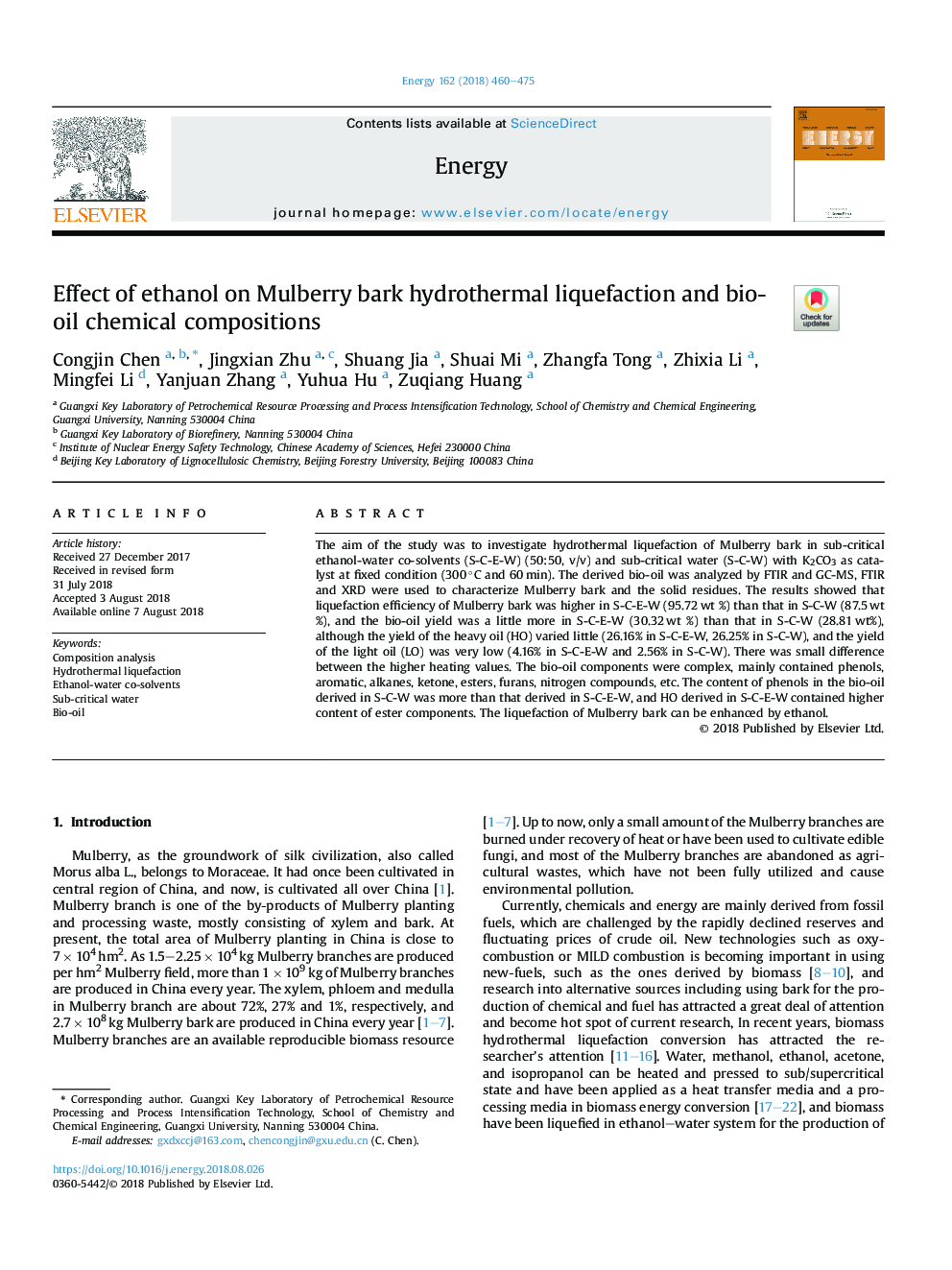| Article ID | Journal | Published Year | Pages | File Type |
|---|---|---|---|---|
| 8070820 | Energy | 2018 | 16 Pages |
Abstract
The aim of the study was to investigate hydrothermal liquefaction of Mulberry bark in sub-critical ethanol-water co-solvents (S-C-E-W) (50:50, v/v) and sub-critical water (S-C-W) with K2CO3 as catalyst at fixed condition (300â¯Â°C and 60â¯min). The derived bio-oil was analyzed by FTIR and GC-MS, FTIR and XRD were used to characterize Mulberry bark and the solid residues. The results showed that liquefaction efficiency of Mulberry bark was higher in S-C-E-W (95.72â¯wt %) than that in S-C-W (87.5â¯wt%), and the bio-oil yield was a little more in S-C-E-W (30.32â¯wt %) than that in S-C-W (28.81â¯wt%), although the yield of the heavy oil (HO) varied little (26.16% in S-C-E-W, 26.25% in S-C-W), and the yield of the light oil (LO) was very low (4.16% in S-C-E-W and 2.56% in S-C-W). There was small difference between the higher heating values. The bio-oil components were complex, mainly contained phenols, aromatic, alkanes, ketone, esters, furans, nitrogen compounds, etc. The content of phenols in the bio-oil derived in S-C-W was more than that derived in S-C-E-W, and HO derived in S-C-E-W contained higher content of ester components. The liquefaction of Mulberry bark can be enhanced by ethanol.
Related Topics
Physical Sciences and Engineering
Energy
Energy (General)
Authors
Congjin Chen, Jingxian Zhu, Shuang Jia, Shuai Mi, Zhangfa Tong, Zhixia Li, Mingfei Li, Yanjuan Zhang, Yuhua Hu, Zuqiang Huang,
